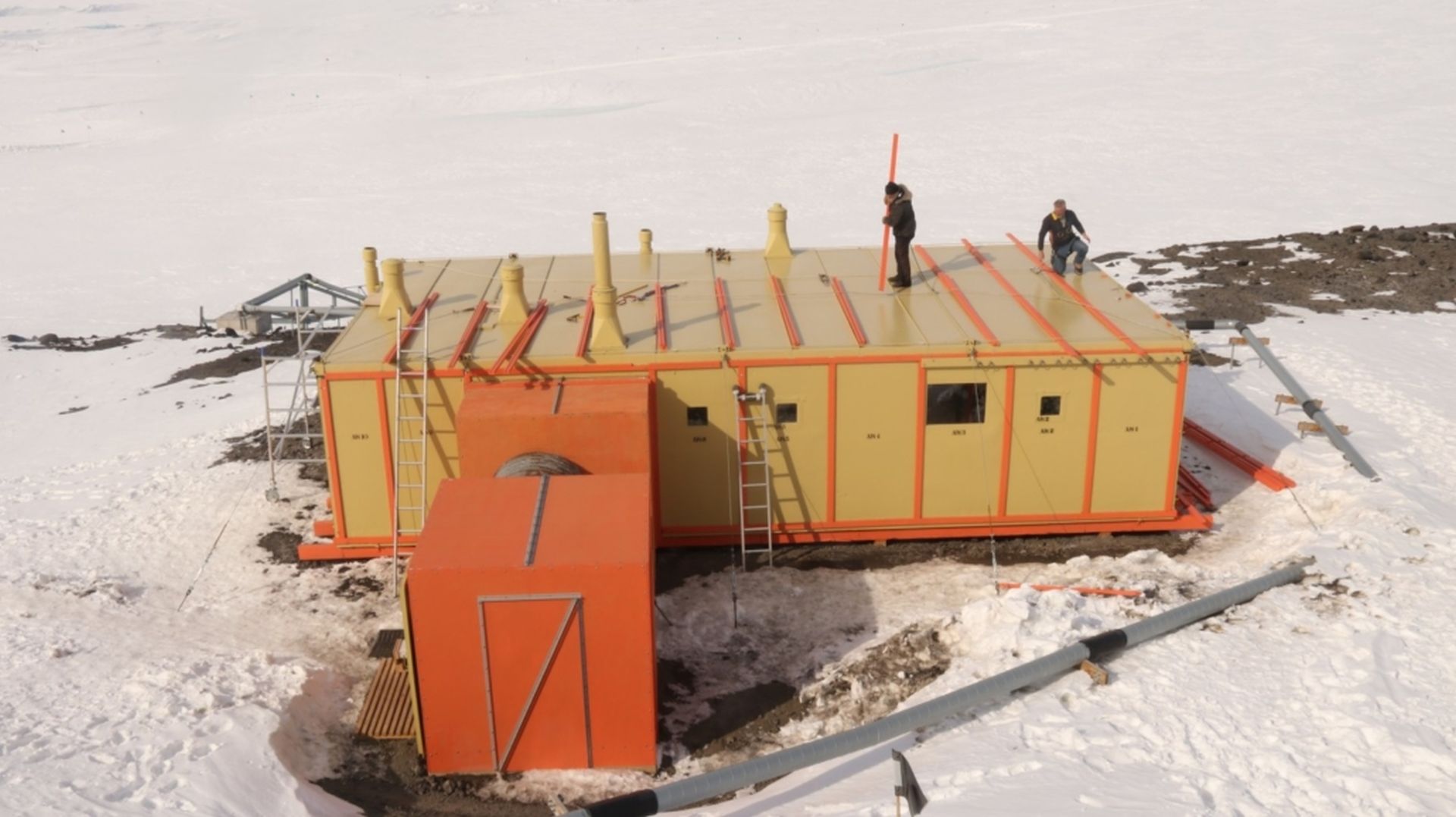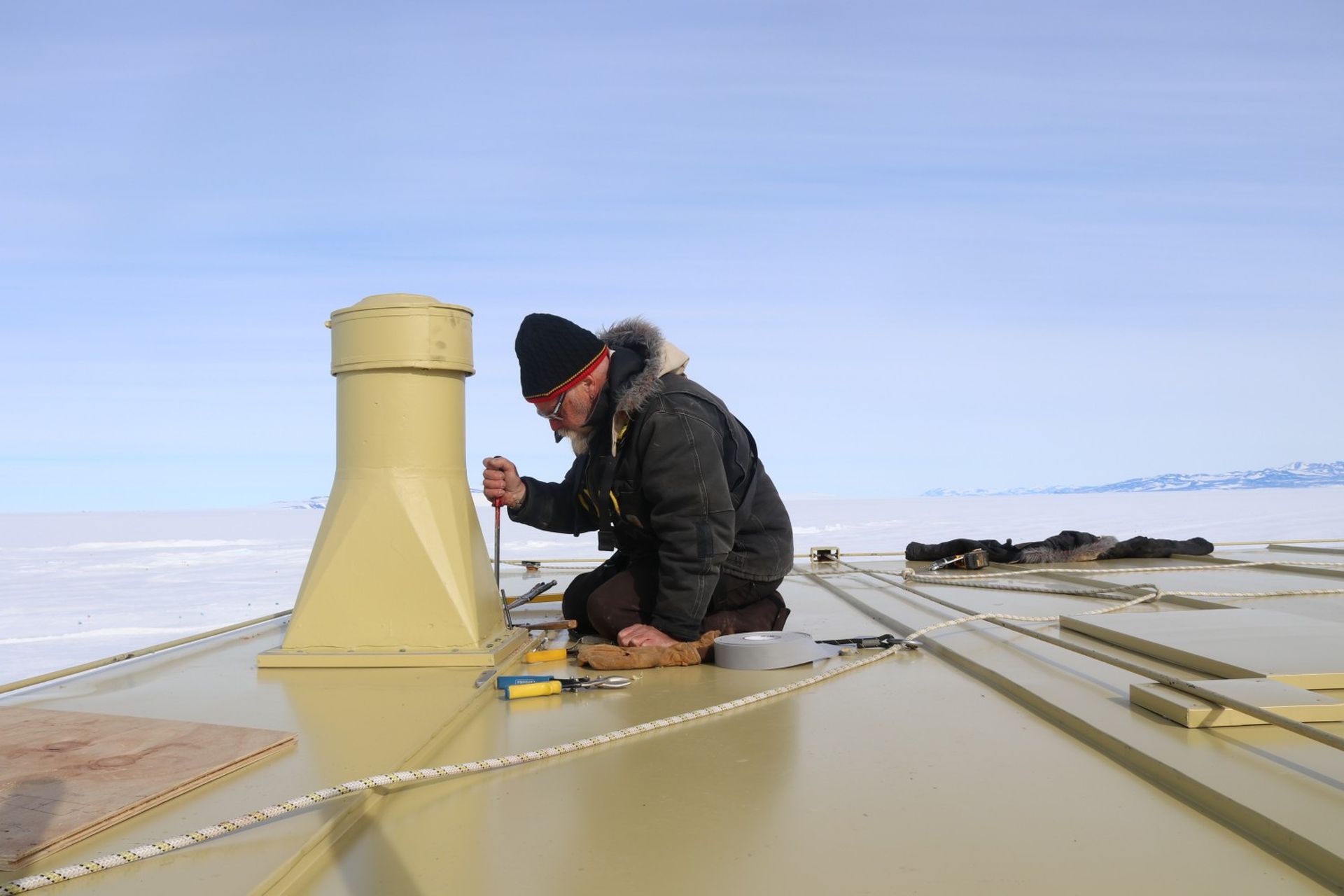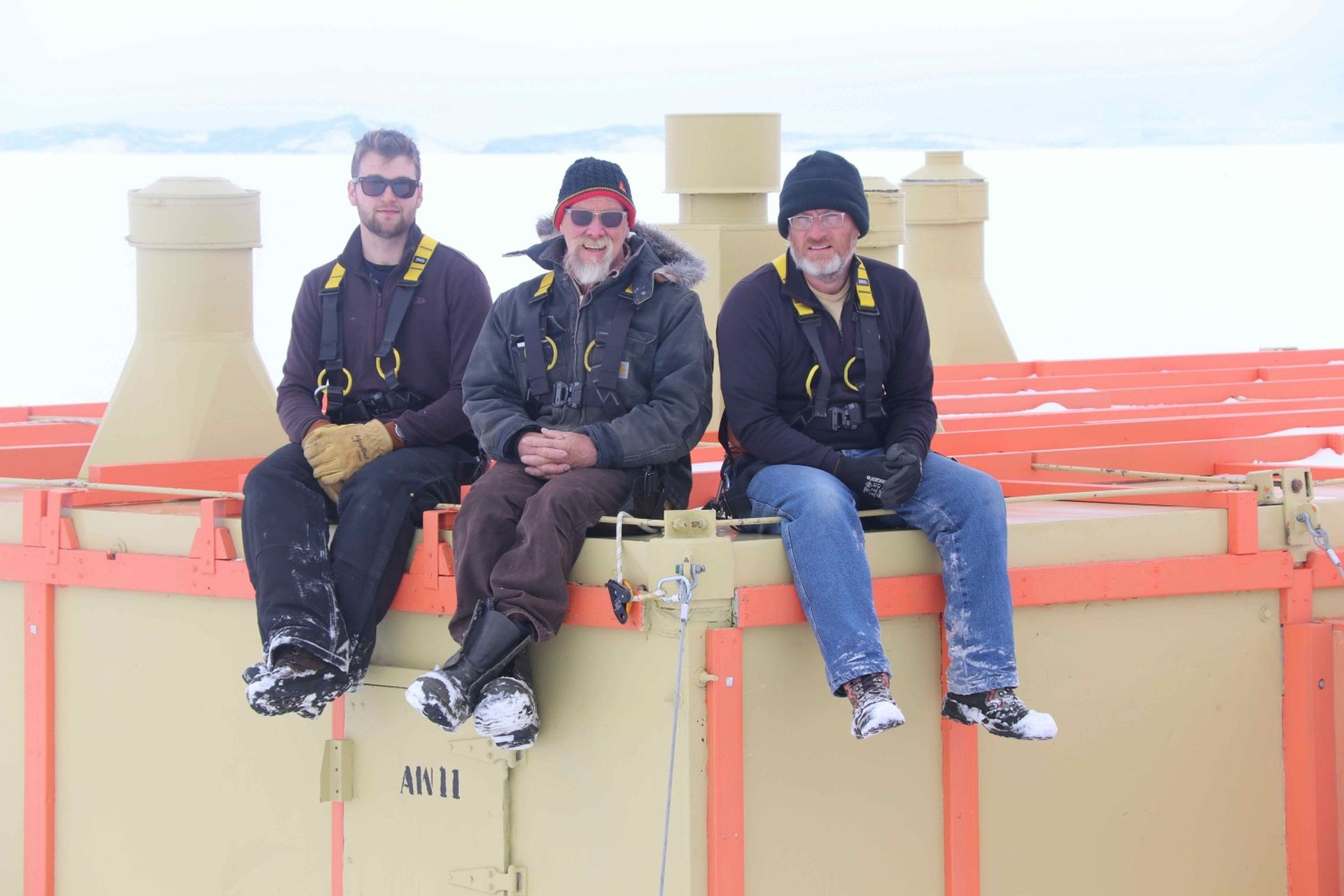Final Touches go on Sir Ed’s Antarctic Hut
The Trust raised nearly a million dollars to save the hut, also known as the TAE/IGY Hut, which was built by a team under Sir Ed’s leadership in 1957 just before his famous dash to the South Pole. The fundraising campaign included a 2012-kilometre tractor journey from Piha Beach to Mount Cook, collecting donations on the way.

Assembling the battens for the roof
The team are now thrilled to have completed conservation work on an iconic piece of Kiwi history.
New Zealand Antarctic Heritage Trust programme manager Al Fastier says it’s been a long and successful road to save the hut and conserve the hundreds of artefacts within it.
“As a historic site, its significance is that it’s the birthplace of New Zealand’s presence in Antarctica and the link to Sir Ed’s famous tractor trip to the South Pole.”
 Antarctic Heritage Trust
Antarctic Heritage Trust Antarctic Programme Manager Al Fastier working on the roof
“As a historic site, its significance is that it’s the birthplace of New Zealand’s presence in Antarctica and the link to Sir Ed’s famous tractor trip to the South Pole.”
While working to conserve Hillary’s Hut last season, the need for a weather-tight long-term roofing solution was identified.
Fastier says the Trust wanted the roofing solution to last a minimum of 35 years but more likely 50 to 100 years. A plan was then developed to overclad the historic roof, meaning the original roof remained intact.
 Antarctic Heritage Trust
Antarctic Heritage Trust Antarctic Youth Ambassador Chris Ansin working on the hut roof
“It gives it a real point of difference,” says Fastier, a long time visitor to the ice.
For Fastier, there was an even greater connection to the restoration effort, New Zealand and Hillary, given he slept in the hut on his first trip to the ice in 1987.
 Antarctic Heritage Trust
Antarctic Heritage Trust Chris Ansin, Al Fastier and Geoff Cooper taking a break on the roof of the hut.
Temperatures averaged -8 to 15 degrees Celsius during the project, with a few -25 and -30 degree Celsius days thrown into the mix.
For specialist Standing Seam roofer, Mike Burgess, the conditions provided a job unlike anything he had ever tackled.
“I’ve never been that cold,” says Burgess, who had to race indoors on the odd occasion to regain feeling in his hands.
The project manager for Architectural Metalformers is used to working through complicated roofing projects in rural, commercial and urban environments in and around Auckland – and less so in the world’s harshest environment.
When he was granted the opportunity to join the conservation effort, Burgess did not hesitate to accept.
“The opportunity to waterproof such an important New Zealand building with our product, while endeavouring to make it visually similar to the original aesthetic could not be passed up, regardless of the weather complexities,” Burgess says.
Not one to opt out of a challenge, Burgess combined his more than 20 years in the business, with further research, to come up with the robust long term waterproof roofing solution.
Burgess and Architectural Metalformers offered their time free of charge.
Having now returned from the ice, Burgess remains under the Antarctic spell.
“It’s been an experience that I will never forget, images and my words certainly don’t do it justice” he says.
“The scale, beauty and the history of the Antarctic – I’ve been bitten by the bug.”
Burgess and the Trust would also like to thank Pacific Coilcoaters, Sika NZ and Nexus Foams for their donated products and technical assistance.


